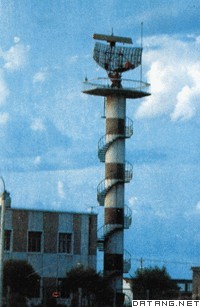1) system boot record


系统引导记录
1.
The article emphasises on the analysis of the functions and structure of the hard Disk master boot record and system boot record,illustrates the start-up process of the hard Disk of microcomputer and,propoeses methods of recovery from hard Disk soft failure.
侧重分析硬盘主引导记录和系统引导记录的功能和结构,阐明微机硬盘启动过程,提出修复硬盘软故障办法。
2) Boot Record


引导记录
1.
The master boot record of the hard disk contains the boot code and partition information.


硬盘主引导记录包括引导代码和分区信息 ,启动计算机时 ,ROMBIOS把主引导记录装入内存 ,并且把控制转给其引导代码的第一条指令 ,由此开始启动过程 ,引导代码通过读取分区表的引导标志来识别由哪一个分区引导系统 ,所以主引导记录的安全维护是非常重要的 为此 ,介绍一种新的保存和恢复主引导记录的方法 ,并且给出了一个用汇编语言编制的程序实
3) master boot record


主引导记录
1.
The paper describes the difficulties of reading and writing the master boot record on hard disk in applications running under Windows 98,presents a method based on using process server to do so and gives the points of programming.
分析了在Windows98操作系统下对硬盘主引导记录进行读写的难点,提出以基于进程间服务器的方式完成硬盘主引导记录读写的方法,并给出了程序实现的要点。
2.
The new features of the master boot record and partition table in Windows environments are described.
介绍了主引导记录和分区表在Windows环境中的新特性。
3.
The article emphasises on the analysis of the functions and structure of the hard Disk master boot record and system boot record,illustrates the start-up process of the hard Disk of microcomputer and,propoeses methods of recovery from hard Disk soft failure.
侧重分析硬盘主引导记录和系统引导记录的功能和结构,阐明微机硬盘启动过程,提出修复硬盘软故障办法。
4) DBR


DOS引导记录
6) recording system


记录系统
1.
Design of port machinery running parameters on-line collecting and recording system;


港口装卸设备运行参数在线采集与记录系统设计
2.
In this paper the methods for trouble shooting in recording system of Shimadzu V D 1A X ray diffractometer were described in detail with example demonstrations.
以实例详细地介绍了岛津VD1A型X射线衍射仪记录系统的故障分析及排除方法。
3.
This paper introduces a method of designing information table in recording system and gives an optimized method used in actual applications.
介绍一种记录系统信息表的设计方法,并根据实践经验提出优化措施。
补充资料:着陆引导系统
| 着陆引导系统 landing guidance system 用无线电设备引导驾驶员或自动驾驶仪使飞机安全着陆的导航系统。无线电着陆引导系统向飞机提供精确的着陆方位、下滑道和距离等引导信息,飞机依据这些信息对准跑道并按给定的下滑角进场和着陆,以保证接地点的偏差在规定的范围以内,着陆系统有以下3种。 ①仪表着陆系统。在各种气象条件下,驾驶员凭借仪表使飞机安全着陆的无线电导航系统。这种系统最早出现于1939年,1949年国际民航组织将其定为国际标准着陆系统。它的优点是:能在复杂气象条件下提供精确直观的引导着陆信息;可根据气象和机场条件选择不同的工作类型(决断高度和跑道视距);使用国际通用的标准设备。缺点是:只能提供一条下滑角固定不变的对准跑道中心线的进场着陆航道,不适用于短距起落和垂直起落的飞机;通道少(40个),不能满足国际民航的新要求(200个);系统要求平坦和净化的场地(草、雪等都会影响引导信号质量)。因而国际民航组织规定这类系统使用保护期截止到1995年1月1日。 ②地面控制进场系统。能准确地测量进场和着陆过程中飞机位置并引导着陆的雷达系统。其优点是:机上无需加装电子设备,对驾驶员无需进行特殊训练;适用于各种场地,机动性好;根据不同机种对下滑角度的要求可选择不同的下滑线。缺点是:因靠地面管制员指挥,驾驶员工作被动;靠管制员手控天线跟踪飞机,只能一架一架地引导;引导距离受气象条件限制。但它不断采用新技术,这些缺点正在克服中。 ③微波着陆系统。工作于微波频段(5031.0~5090.7兆赫)、由机上设备获得引导数据的无线电着陆系统。其优点是:系统精度高,能满足全天候工作要求;允许飞机任意选择机场航道,适用于作各种起落的各型飞机;系统容量大(200个通道),能满足空中交通量增加的要求;设备体积小,对场地要求低;系统抑制多径干扰能力强。国际民航组织于1978年选定时基扫描波束微波着陆系统作为新的标准着陆系统。它能提供连续的、精确的3坐标(方位、仰角、距离)信息。
|
说明:补充资料仅用于学习参考,请勿用于其它任何用途。
参考词条
